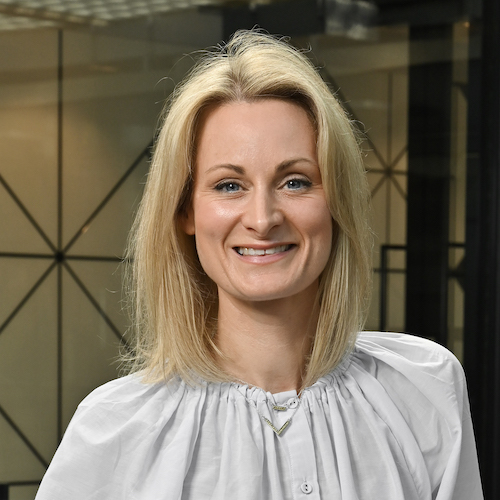Covid marketing webinar Q&A: getting thought leadership right in a time of change
Emily Taylor Gregory
For our recent Covid marketing webinar series, The Way Ahead, FT Longitude co-founders Rob Mitchell and Gareth Lofthouse shared insight on why leading brands have to rethink their thought leadership to stay ahead in a fast-moving market. Our audience’s questions covered the issues marketers have to grapple with right now to produce effective thought leadership. Here are just a few of those questions and what our experts said in our Covid marketing webinar .
Producing original insight takes time – especially when research is involved. The current market is unforgiving of slow movers. How can the process be accelerated?
Rob: It’s true that good research does often take time, but there are ways to speed up the process. First, it’s important to understand what determines how long research takes to complete.
In our experience, the biggest culprit is usually complexity. As soon as you start mapping out surveys that require quotas within countries, roles, company sizes and sectors, you add complexity and time to the process. Going for a more general sample will always save time – and should still generate valuable insight. This is not always possible, but it often is. So we always advise our clients to challenge the level of complexity in their research and remove it wherever they can.
Another potential roadblock we often encounter is detailed stakeholder reviews. These can really slow down research and content campaigns if every asset has to go through multiple approvals. This year, we’ve seen a number of companies build greater agility into the approval process; they have taken away unnecessary layers of bureaucracy and brought in more senior people who have the authority to make decisions quickly on behalf of a larger group.
Marketers today are having to produce content on multiple topics at speed. Does that mean they have to give up on consistency?
Gareth: Loss of consistency is something we see a lot – particularly in large multinationals with dispersed thought leadership teams. But it’s not easy or always desirable to change that dispersed approach in favour of greater control and centralisation.
In our experience, companies with centralised teams usually produce more consistent messaging, but they risk being further removed from the client conversation and therefore less relevant to the audience’s needs. So there’s always a balance to strike between centralised and decentralised teams – a ‘glocal’ approach, whereby both local and global considerations are factored in, is usually best.
That said, there are ways to address inconsistency. Try to coordinate teams to check that campaigns are aligned and prevent them from sending out different messages. Try also to have a ‘unified theme’ for each campaign, with one message that unites disparate content themes. These unifying messages need substance, but they should also be flexible enough to cover a wide range of underlying themes. Accenture’s ‘Outmanoeuvre Uncertainty’ campaign is a good example of this.
Publishing insight when the environment around you is changing so quickly means you can’t afford to stall. What can marketers can do to test content before they launch it to ensure it resonates effectively with their audiences?
Rob: A good content strategy includes gathering insight into what your audience wants and having a clear view of who the target audience is at a deeper level. In our experience, companies get better results if they talk to their clients during the research phase. Not only will this help you to build a stronger relationship with your clients because you’re consulting with them to better understand their challenges and issues, but it also helps to ensure that your content is relevant.
We also always recommend a pilot launch, whereby you present your content to a small sample of your target audience and ask for their feedback before you release it far and wide. You can then make any changes to optimise your content before you launch your campaign at scale, which increases your chances of successfully engaging new buyers.
We look to leaders in times of crisis. When it comes to thought leadership, who are audiences more likely to engage with – people or brands?
Rob: First I think it’s important to establish what we mean by ‘brand’; for us, it’s the way a company or individual is perceived by those who experience it. Audiences engage with brands because they expect certain behaviours from them, and any messages they communicate need to be consistent and authentic to what that brand represents. In my view, branding in thought leadership is all about building emotional connections between your business and a particular theme or message.
Audiences engage with people in a rather different way. Typically, there is more nuance when it comes to human interaction, and any relationship will be much deeper than it ever can be with a brand. This is why we always suggest that your thought leadership has visible spokespeople who can articulate your message with the subtlety of a more personal point of view.
Ultimately, good thought leadership needs both brand and people behind it. The brand is essential because it is usually the primary association your audience has with your business. But you also need people to bring your thought leadership to life. The right individuals will make your thought leadership feel authentic, build trust and, ultimately, start conversations and create lasting connections with your audience.
This Q&A draws on the insights from our latest ebook and Covid marketing webinar: The Way Ahead.
To find out more about how the crisis is changing the direction of thought leadership, including access to our thought leadership measurement framework and how to apply it within your organisation, download the complete ebook here.
Speak to the team
We’ll help you to navigate and overcome any challenges you currently face and learn how to get more out of your content.
Book a meeting
About the author: Emily Taylor Gregory
Emily is our marketing director, responsible for the brand, marketing and communications strategies for FT Longitude. Emily leads our content and events programmes, as well as our speaking engagements and PR activity, working closely with our editorial and research teams to develop and promote insight and best practice at the cutting edge of thought leadership.
Before joining FT Longitude, Emily spent 14 years working in various marketing roles in the publishing and technology sectors.
 |
Tel:
+44 (0)20 7873 4770
|
Tel:
+44 (0)20 7873 4770


